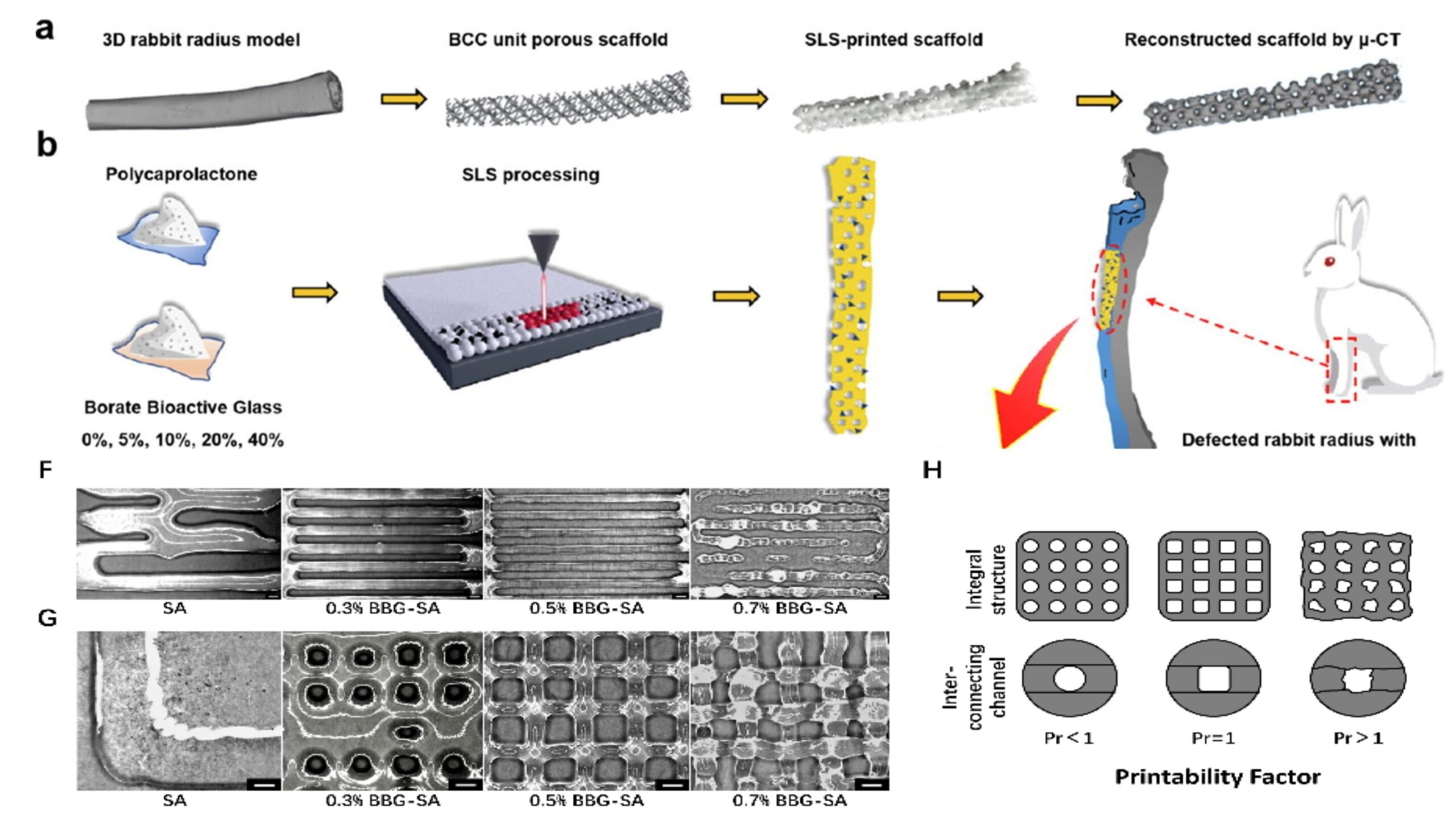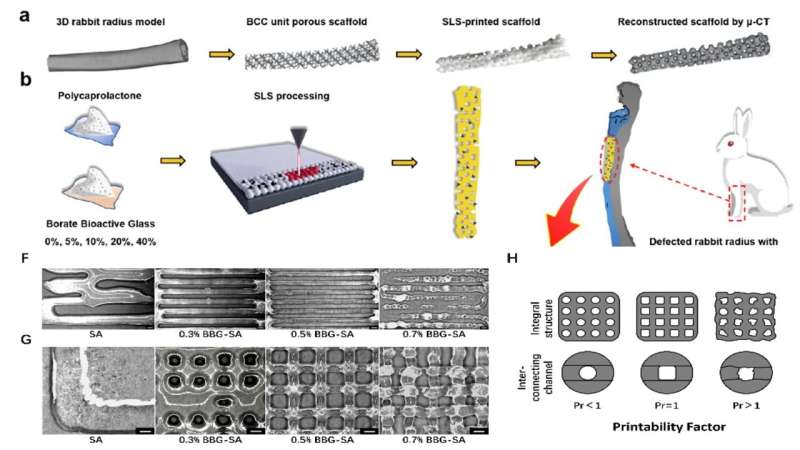

3D bioprinting is an advanced tissue engineering technique that builds complex tissues using bioactive substances like living cells and scaffolds. It provides personalized tissue repair solutions, reducing immune rejection by using patient-specific cells. Common-used 3D bioprinting materials include polycaprolactone (PCL) and poly lactic-co-glycolic acid (PLGA) for hard tissue and hydrogels for soft tissue.
Bioactive boron-based glass (BBG) can be used in combination with PCL or sodium alginate (SA), a carrier medium for 3D bioprinting of cells and a diverse array of bioactive substances, to form materials with high mechanical strength and good processability.
BBG is effective in bone regeneration by promoting hydroxyapatite formation and has an adjustable degradation rate to suit different repair needs. Therefore, its application in 3D bioprinting materials shows great potential.
By introducing BBG into the SA matrix, a research team led by Prof. Wang Junfeng at the Hefei Institutes of Physical Science of the Chinese Academy of Sciences developed novel 3D bioprinting composite materials dedicated to both bone and soft tissue repair.
The findings are published in the International Journal of Biological Macromolecules.
“By leveraging the bioactivity of BBG and the customizable properties of these materials, we are offering better solutions for tissue repair,” said Prof. Wang.
The research team developed BBG/PCL composites with varying BBG contents using selective laser sintering (SLS) technology for bone defect repair.
Evaluation on pore geometry, porosity, mechanical strength, degradation behavior, and cell compatibility of the materials, showed that the 20% BBG composite was the optimal choice. It exhibited a porosity of 68.5%, a pore size of 650 microns, and a compressive strength of 0.860 MPa, making it highly effective in supporting bone healing and regeneration.
For soft tissue repair, the researchers turned to BBG-SA bioinks. Using extrusion-based 3D printing technology, they incorporated BBG particles into sodium alginate to create bioinks with high precision and improved gelation properties.
Traditional hydrogels often suffer from problems such as low printing accuracy and significant shrinkage during gelation. The BBG-SA bioinks provided an effective solution.
The optimal 0.5% BBG-SA hydrogel demonstrated excellent printability, improved structure, and enhanced biocompatibility, encouraging cell adhesion and promoting the expression of genes and proteins associated with soft tissue repair.
“Our work will significantly enhance the potential of bioactive glass in 3D bioprinting materials and provide a crucial research foundation for developing novel bio-based 3D printing materials,” said Prof. Ma Kun, one of the corresponding authors of this study.
More information:
Zeyong Guo et al, Borate bioactive glass enhances 3D bioprinting precision and biocompatibility on a sodium alginate platform via Ca2+ controlled self-solidification, International Journal of Biological Macromolecules (2024). DOI: 10.1016/j.ijbiomac.2024.134338
Provided by
Chinese Academy of Sciences
Citation:
3D bioprinting materials offer possibility for better bone and soft tissue repair (2024, September 2)
retrieved 3 September 2024
from https://phys.org/news/2024-09-3d-bioprinting-materials-possibility-bone.html
This document is subject to copyright. Apart from any fair dealing for the purpose of private study or research, no
part may be reproduced without the written permission. The content is provided for information purposes only.

